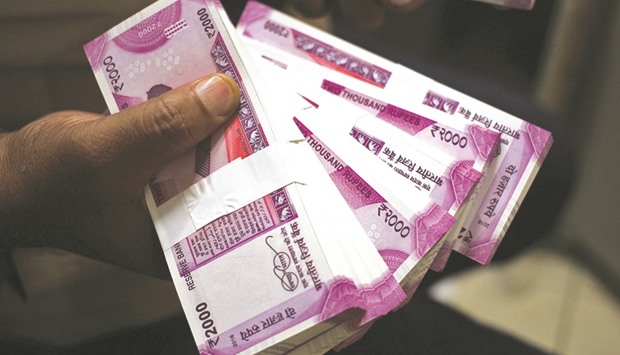India’s small and mid-cap stocks climbed to a two-week high and the benchmark indexes rose for a second day as local institutional investors boosted purchases amid gains in Asian equities.
The Sensex closed higher by 33.83 points, or 0.13%, to 26,350.17, while the Nifty 50 of the NSE closed up 12.60 points, or 0.16%, to 8,126.9.
Bharti Airtel rallied to a one-month high, sending a gauge of telecom companies to its best gain since February. Hindustan Petroleum Corp rallied to a record, while Mangalore Refinery & Petroleum soared 15% to the highest level since May 2008, the best performance on a gauge of medium-sized companies. Power generator NTPC rose to a three-month high.
Overseas investors have been pulling out of India since November 9, the day after Donald Trump’s surprise US election victory and India’s currency overhaul that’s sucked out 86% of the bills in circulation. Global funds have sold $2.2bn of local shares this month, sending the S&P BSE Sensex down 5.7% in November, while institutional investors have bought $2.3bn of equities, data compiled by Bloomberg show.
“Local investors see this as a ‘buy on dip’ market, and by and large they’re of the opinion that the government steps are good for the long-term,” Hiren Ved, chief investment officer at Alchemy Investment Management, said by phone from Mumbai. Finance companies, banks and consumer stocks may present “a good buying opportunity” as their valuations become attractive in the coming days, he said. The Sensex is set for its biggest loss since February amid concern the cash crunch arising from the government’s recall of high-value currency notes will hurt economic growth. The measure may drag down gross domestic product in the year to March by 0.5 percentage points, Citigroup said in a report.
A gauge of lenders fell to a four-month low intraday after the Reserve Bank of India told banks to set aside more deposits in reserves to curb the surging liquidity produced by the November 8 currency recall. Banks have been flooded with more than $73bn in deposits after people started turning in Rs500 and Rs1,000 notes that are no longer valid. Lenders were profiting by accepting this cash at 4% and lending to the central bank at 6.25%.
“The liquidity measure will put pressure on banks’ earnings,” said Sushant Kumar, a fund manager at the Mumbai- based Raay Global Investments. “State-owned lenders and smaller private banks will be under pressure. Indian markets will remain range-bound with a negative bias.”
The Sensex trades at 15.5 times 12-month projected earnings, near the cheapest level since May. That compares with the MSCI Emerging Markets Index’s multiple of 12.
Meanwhile the rupee yesterday closed at a fresh 39-month low against the US dollar, amid nearly $5bn outflows from foreign institutional investors (FIIs) in local equity and bond markets since the government announced the demonetisation scheme.
Rupee closed at 68.78 a dollar, down 0.44% from its previous close of 68.47. The home currency opened at 68.43 against the US dollar and touched a low of 68.80 a dollar. So far this year, it has fallen 3.81%. Barclays expects that the currency volatility could increase and liquidity could become scarce during bouts of market risk aversion and dollar strength, as the market tests the new Reserve Bank of India (RBI) leadership’s tolerance for weakness in the rupee.
Bond yields gained after the RBI on Saturday unexpectedly ordered banks to deposit their extra cash with it, in a bid to absorb excess liquidity generated by the government ban on larger banknotes.
The central bank said banks would need to transfer 100% of their cash under the RBI’s cash reserve ratio from deposits generated between September 16 and November 11, saying it was a temporary measure that would be reviewed on or before December 9.
The benchmark 10-year government bond yield gained 9 basis points, to 6.327%, compared to Friday’s close of 6.233%. Bond yields and prices move in opposite directions.
So far this year, FIIs have bought $4.57bn in equities and sold $3.02bn in debt. Most Asian currencies advanced as the dollar index and US treasury yields dropped, while oil prices declined after a planned meeting on Monday between Opec and non-Opec producers was cancelled.
Japanese yen was up 0.819%, South Korean won 0.598%, Taiwan dollar 0.529%, China renminbi 0.149%, Thai baht rose 0.135%, Singapore dollar 0.007% and China offshore 0.095%. However, Malaysian ringgit was down 0.121%, Indonesian rupiah 0.052% and Hong Kong Dollar down 0.003%.
The dollar index, which measures the US currency’s strength against major currencies, was trading at 100.32, down 0.17% from its previous close of 101.49.

The rupee closed at 68.78 a dollar, down 0.44% from its previous close
